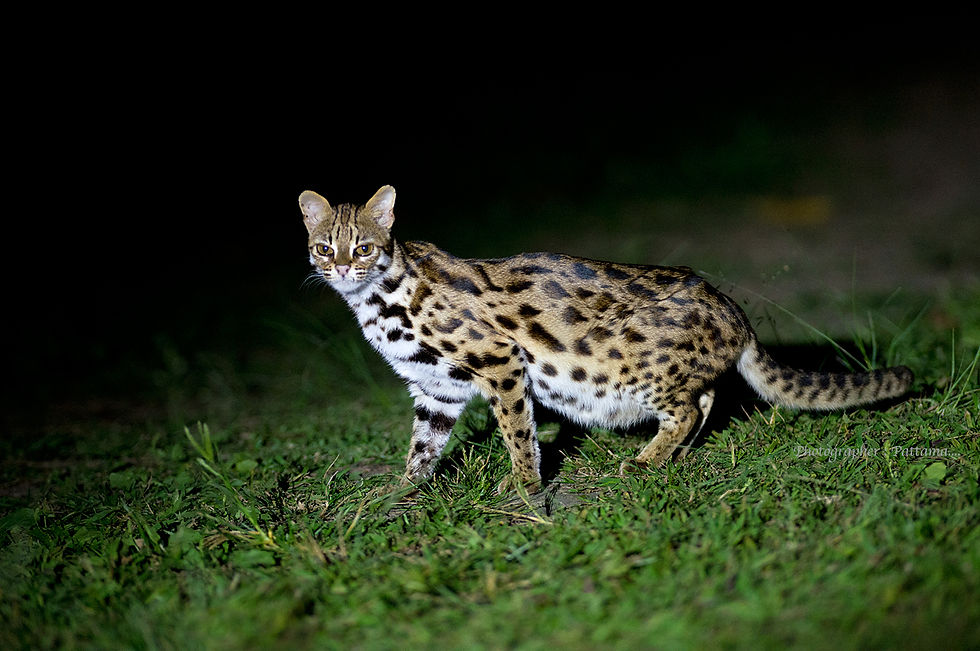eneral Characteristics
Size and Shape: The Leopard Cat is a small-sized wild cat, with a body length ranging from 45 to 65 centimeters and a tail length of about 20 to 30 centimeters. It typically weighs between 1.5 to 7 kilograms. This small size allows the Leopard Cat to be highly agile, making it an excellent climber.
Fur and Pattern: Its fur is primarily brown or light gray, adorned with distinctive spots or lines that cover its entire body. The face features lines running from the forehead to the back, contributing to its unique appearance.
Eyes: The Leopard Cat has large, round eyes that are well-adapted for night vision, making it a nocturnal animal.
Habitat
In Khao Sok National Park, the Leopard Cat is found in lush, biodiverse environments such as evergreen forests, rainforests, and bamboo groves. These habitats provide the necessary water sources and abundant prey that are essential for the cat's survival.
Behavior and Diet
The Leopard Cat is a solitary and nocturnal animal, often seen hunting alone during the night. Its diet primarily consists of small mammals such as rodents, as well as birds, insects, and occasionally reptiles or amphibians. The Leopard Cat is also known for its fishing ability, which allows it to hunt in the park's water sources.
Conservation Status
The Leopard Cat is classified as Near Threatened by the International Union for Conservation of Nature (IUCN). Although it is not yet on the brink of extinction, habitat loss and poaching for fur and other body parts pose significant threats to its population.
Occurrence in Khao Sok National Park
In Khao Sok National Park, the Leopard Cat is one of the rare species that visitors might encounter, particularly during nighttime in secluded, undisturbed areas of the park. Its elusive nature and preference for quiet habitats make sightings rare but special for those who are fortunate enough.
Conservation Efforts
Conserving the Leopard Cat in Khao Sok National Park involves protecting its natural habitat and managing the park's resources sustainably. Additionally, educating local communities about the importance of wildlife conservation is crucial to ensuring the survival of this species.
This detailed information can contribute to ongoing conservation efforts and educational initiatives related to the Leopard Cat in Khao Sok National Park.

